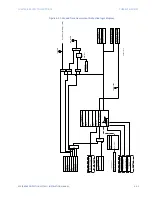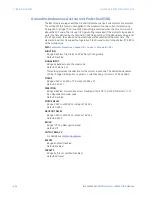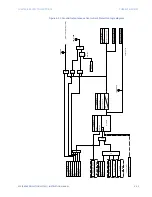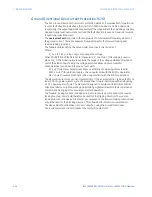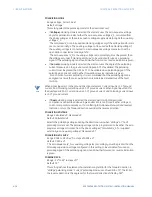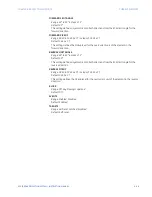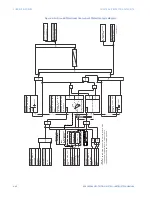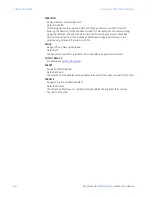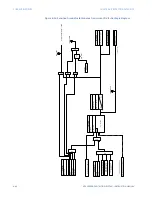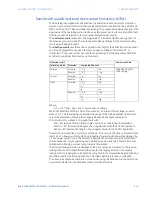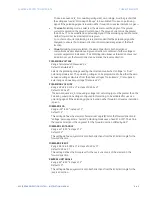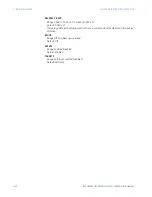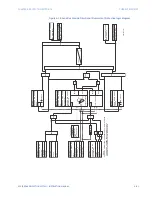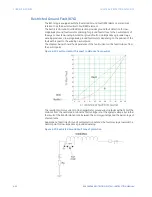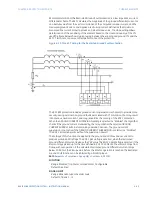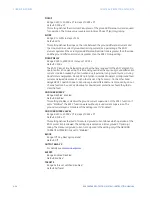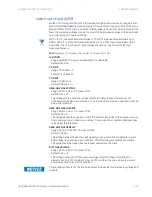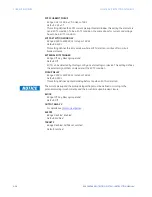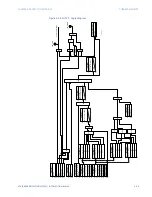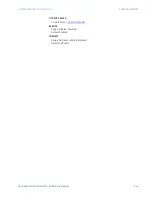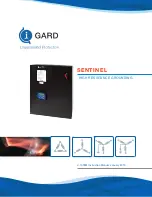
CHAPTER 6: PROTECTION SETPOINTS
CURRENT ELEMENTS
850 FEEDER PROTECTION SYSTEM – INSTRUCTION MANUAL
6–47
Sensitive Ground Directional Overcurrent Protection (67SG)
The 850 relay is equipped with the Sensitive Ground Directional Overcurrent protection
element. It provides both forward and reverse fault direction indications: the S.Gnd Dir OC
FWD and S.Gnd Dir OC REV operands, respectively. The output operands are asserted if the
magnitude of the operating current is above a Pickup level (overcurrent unit) and the fault
direction is seen as forward or reverse, respectively (directional unit).
The
overcurrent unit
responds to the magnitude of a fundamental frequency phasor of
the sensitive ground current. There are separate Pickup settings for the forward-looking
and reverse-looking functions.
The
directional unit
uses the sensitive ground current (Ig) for fault direction discrimination
and may be programmed to use either zero-sequence voltage (“Calculated V0” or
“Measured VX”), ground current (Ig), or both for polarizing. The following tables define the
Sensitive Ground Directional Overcurrent element.
Where:
V_0 = 1/3 * (Vag + Vbg + Vcg) = zero sequence voltage
When POLARIZING VOLTAGE is set to “Measured VX,” one-third of this voltage is used in
place of V_0. The following figure explains the usage of the voltage polarized directional
unit of the element by showing the voltage-polarized phase angle comparator
characteristics for a phase A to ground fault, with:
ECA = 90° (element characteristic angle = centerline of operating characteristic)
FWD LA = 80° (forward limit angle = the ± angular limit with the ECA for operation)
REV LA = 80° (reverse limit angle = the ± angular limit with the ECA for operation)
The element incorporates a current reversal logic: if the reverse direction is indicated for at
least 1.25 of a power system cycle, the prospective forward indication will be delayed by
1.5 of a power system cycle. The element is designed to emulate an electromechanical
directional device. Larger operating and polarizing signals will result in faster directional
discrimination bringing more security to element operation.
The forward-looking function is designed to be more secure as compared to the reverse-
looking function, and should therefore be used for the tripping direction. The reverse-
looking function is designed to be faster as compared to the forward-looking function and
should be used for the blocking direction. This allows better protection coordination.
The above bias should be taken into account when using the Sensitive Ground Directional
Overcurrent element to directionalize other protection elements.
Directional Unit
Overcurrent Unit
Polarizing Mode
Direction
Compared Phasors
Voltage
Forward
-V_0
Isg
SENSITIVE GROUND
CURRENT (Isg)
Reverse
-V_0
-Isg
Current Forward
Ig
Isg
Reverse
Ig
-Isg
Dual
Forward
-V_0
Isg
or
Ig
Isg
Reverse
-V_0
-Isg
or
Ig
-Isg
Summary of Contents for Multilin 850
Page 10: ...VIII 850 FEEDER PROTECTION SYSTEM INSTRUCTION MANUAL ...
Page 135: ...CHAPTER 3 INTERFACES SOFTWARE INTERFACE 850 FEEDER PROTECTION SYSTEM INSTRUCTION MANUAL 3 41 ...
Page 151: ...CHAPTER 3 INTERFACES SOFTWARE INTERFACE 850 FEEDER PROTECTION SYSTEM INSTRUCTION MANUAL 3 57 ...
Page 153: ...CHAPTER 3 INTERFACES SOFTWARE INTERFACE 850 FEEDER PROTECTION SYSTEM INSTRUCTION MANUAL 3 59 ...
Page 439: ...CHAPTER 7 MONITORING FUNCTIONS 850 FEEDER PROTECTION SYSTEM INSTRUCTION MANUAL 7 19 ...
Page 644: ...11 20 850 FEEDER PROTECTION SYSTEM INSTRUCTION MANUAL FLEXELEMENTS CHAPTER 11 METERING ...

